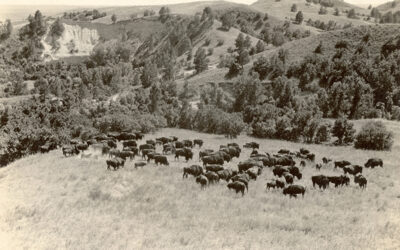After the depression of 1920-21 the Burlington Railroad sought to revive freight traffic in its western territory. John B. Lamson, head of the Burlington’s Agricultural Development Department, initiated an educational campaign directed primarily at farmers. The Burlington and other companies had previously experimented with special educational trains and had demonstrated the practicality of such an approach. Of special interest to Nebraskans is the “Nebraska Purebred Dairy Sires Special” of 1924.
The 1924 Burlington campaign to improve dairying in Nebraska was part of a general plan to encourage farm diversification and to reduce production costs. Since 1913 the Burlington had encouraged dairy development in Nebraska through exhibit cars and through the purchase and shipment of purebred dairy stock for Nebraska farmers. The 1924 plan for the most part consisted of exchanging purebred animals for scrubs in order to improve the state’s dairy herds.
The newly formed Nebraska Dairy Development Society, the agricultural school at the University of Nebraska, and the stock breeders of the state joined the Burlington in the 1924 campaign. Plans called for the special train to be in Lincoln on Sunday, October 5, 1924, for public inspection; then it was to run until October 23 through thirty-one towns. The train itself consisted of twelve cars: three carried livestock; two contained dairy exhibits; one served as a demonstration car; two held feed and equipment; and one provided accommodations for personnel accompanying the train. Statewide press and radio gave active assistance to the campaign. Will Maupin and H. H. Biggar, two of the leading farm writers in Nebraska, covered the entire tour.
The “Nebraska Purebred Daily Sires Special” was well attended. A total of 71,335 persons passed through the train between October 5 and October 23. The average attendance was 2,229, with a high of 4,066 at Broken Bow and a low of 734 at Greeley. A second inspection trip was arranged for October 1926 to obtain additional firsthand information on the bulls which had been exchanged in 1924.
As a result of this train, many farmers acquired their first purebred stock, and the number of cows bred to purebred bulls increased considerably in each locality. The 100,000 or more visitors to the train better understood the virtues of purebred dairy stock.



